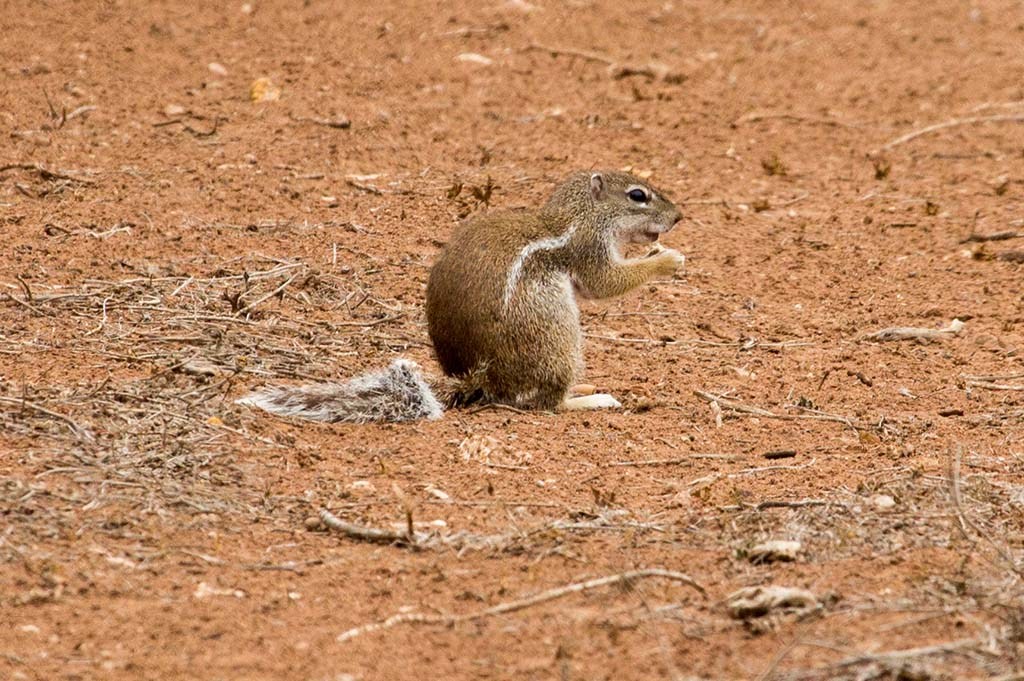In the Palearctic, the Striped Ground Squirrel is only present in Morocco. Despite being relatively large and diurnal, the species remained poorly known since it was discovered in the country. A new study shed more light on this mammal species.

The striped ground squirrel (Euxerus erythropus) is widely distributed in the Sudano-Guinean savannah, between the equator and the transition of the Sahelian zone and the Sahara (see map). An isolated relict population which inhabits the Souss Valley in Morocco, is the only presence of the species north of the Sahara (i.e. in Palearctic region).
The Moroccan population was discovered (too late) during the 1940s (Blanc & Petter 1959), but since then it remained unnoticed with practically no new observations has been published in the following decades.
A new study published in the journal Mammalia (Kryštufek et al. 2018) showed that even carefully conducted surveys by zoologists missed the species. The same is partially true for the great majority of eco-tourists. On the other hand, the Barbary ground squirrel (Atlantoxerus getulus) which also occurs in the same region is among the most known mammals both to locals and tourists.

The species was found between an altitude of 45–254 m and on a substrate with coarse texture containing a lot of sand. The species is a habitat generalist and during this study it was found more frequently in suburban and cultivated areas.
The habitat suitability analysis carried out by the authors showed that the highly suitable area covers almost 690 km2, whereas the unsuitable area represents 3619 km2 of the region below an altitude of 350 m (see map B in the figure).
References:
Blanc, G. & Petter, F. 1959. Présence au Maroc de l’Ecureuil terrestre du Sénégal Xerus erythropus. Mammalia 23: 239–241.
Kryštufek, B., Stanciu, C., Ivajnšič, D., Cherkaoui, S. I. & Janžekovič, F. 2018. Facts and misconceptions on the Palaearctic existence of the striped ground squirrel. Mammalia 82: 248–255. doi: 10.1515/mammalia-2017-0060
More about mammals:
- Saharan Cheetah photographed in the Ahaggar Cultural Park, Algeria (Mar. 2020)
- Sand Cat sighted at Merzouga, Morocco, for the first time in more than 2 decades (Feb. 2019)
- Barbary macaques (Macaca sylvanus) at Jbel Moussa, northern Morocco.
